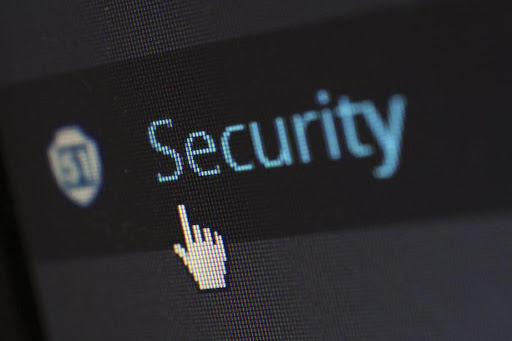Cybersecurity Best Practices for Safeguarding Digital Assets

Contents [Show]
Train your employees
Cybercriminals look for all sorts of vulnerabilities and exploit they can utilize to gain access to a company’s digital assets. This includes untrained and inexperienced employees who are prone to make mistakes that can put your digital assets at risk. In fact, cybercriminals have designed a class of cyberattacks known as social engineering attacks that target inexperienced employees for gaining unauthorized access to secure data. For instance, phishing is a commonly used social engineering technique that involves sending fake emails to employees to gain credentials to digital assets. What’s more concerning is that 98% of cyberattacks involve social engineering techniques.
As a result, training your employees about cybersecurity is an effective practice for safeguarding digital assets. It would help if you inform your workers about the threats they may face online and how to deal with them. For this purpose, you can arrange training sessions and workshops for your employees. With increased knowledge and awareness, your employees will know how to identify and handle phishing scams and secure your digital assets.
Implement access control measures
Threats to your digital assets can be external as well as internal. This means unauthorized employees and other individuals within your company can access sensitive data and steal or destroy it. As a result, implementing access control measures is a crucial cybersecurity practice that needs to be employed. It ensures that each individual within a company only has access to data they can view. This security measure reduces insider threats, including intentional and unintentional employee harm.
To implement effective access control measures, you first need to identify and classify digital assets into different categories. Doing so will help you designate different categories for each employee according to their access levels. After data classification, you can implement user authentication through multi-factor authentication (MFA). Unlike simple passwords, MFA ensures greater security by passing the user through several different authentication tests before providing access to data. In contrast, 80% of data breaches occur due to poor passwords.
Use reliable software
The vast majority of cybersecurity measures are implemented through different software. For instance, anti-malware, firewalls, intrusion detection systems (IDS), and VPNs are all software that companies use for enhanced security. However, if the software you use is not reliable enough, there will be several vulnerabilities for cybercriminals to exploit. Hence, it’s a good practice always to make sure that you are using reliable and reputable security software.
However, when it comes to reliability, software version is equally important. Software companies frequently provide patches and updates that provide better security and deal with existing vulnerabilities. Keeping your software updated to the latest version is essential to ensure your digital assets are not at risk due to vulnerabilities. So, make sure to regularly review your security software and install updates as soon as possible.
In the digital age, businesses of all sizes store their valuable assets using technology. This has helped to streamline business operations, increase efficiency, and boost revenue. However, it has also made digital assets a prime target for cybercriminals.
A single cyberattack can destroy years' worth of data and lead to significant financial losses. Small businesses may be unable to recover from such an attack, while large-scale businesses can suffer huge setbacks.
What's more concerning is that cybercriminals use state-of-the-art technology and cutting-edge techniques to steal digital assets. However, you can protect your company from being destroyed by a cyberattack. Several advanced security measures have been designed for effective protection against cyberattacks.
Our article will discuss the importance of cybersecurity best practices and provide tips on implementing them in your business.
Cybersecurity Best Practices
Identify weaknesses
Cybercriminals focus on finding and exploiting gaps in the digital security systems of companies to steal digital assets. Keeping this in mind, the best cybersecurity practice is to identify the vulnerabilities of your security system before the cyber criminals do. For this purpose, you must carefully monitor every aspect of your company’s digital network and system. Penetration testing, vulnerability scans, and security assessments are some techniques employed to find weaknesses in a security system. You will also need to create security reports and review logs to determine how your security system reacts to potential threats to find its vulnerabilities further. Once you’re aware of the gaps in your security system, you can take measures to reduce them for a robust cybersecurity system.
However, identifying vulnerabilities in security systems can be a complicated task. Penetration testing and other tasks, such as reviewing security reports, can be incredibly difficult for someone without enough technical knowledge. In such a situation, it’s best to gain advanced education in cybersecurity through a masters degree. You can also choose to pursue the degree online to learn comfortably and at your own pace. So, make sure to enroll in a masters in cyber security online to ensure the protection of your digital assets. It will also make you more employable and potentially boost your income. Furthermore, the advanced cybersecurity knowledge will help you protect your digital assets and improve their functionality.
Backup your assets
Effective cybersecurity is not only about preventing cyberattacks but also involves recovery. Preventative measures will be of no use once cybercriminals gains hold of your digital assets. Hence, you must ensure you can regain your valuable data after a cyberattack. Otherwise, your company might become bankrupt, as many cybercriminals ask for huge sums of money in return for the data. The best way to ensure effective recovery from a cyberattack is by backing up your digital assets.
Backups involve making copies of your digital assets and storing them in different safe places. So, even if your digital assets are destroyed or stolen, you will have several copies stored as backups. Indeed, you will not be able to recover the data from the cybercriminals. However, a backup will be able to protect you against permanent loss of data. One of the ways you can back up your data is through external storage devices such as hard drives. However, make sure to keep your data encrypted for foolproof security. In addition, you can also use cloud storage to back up your data offsite.
Conclusion
Digital assets can significantly improve the productivity and efficiency of business operations. However, they can also be quite vulnerable as cyberattacks continue to grow exponentially. In such a situation, it’s crucial to ensure the safety of your valuable assets through effective cybersecurity practices. So, create a secure future for your company and consider the cybersecurity practices provided above.


0 Comments